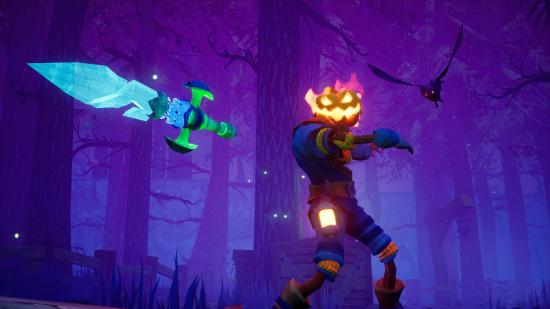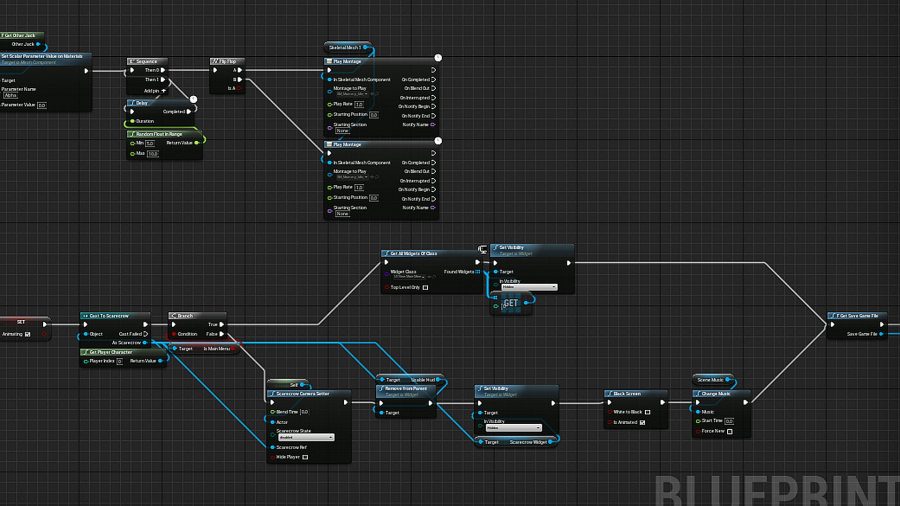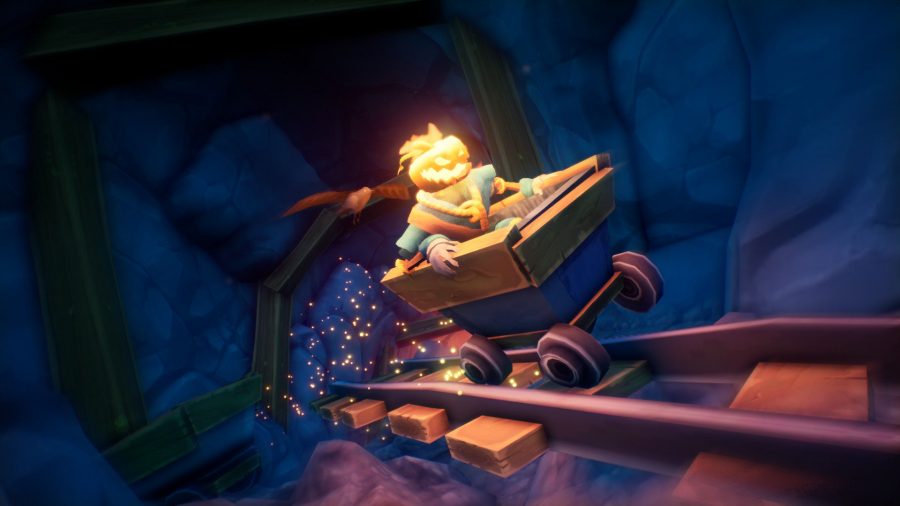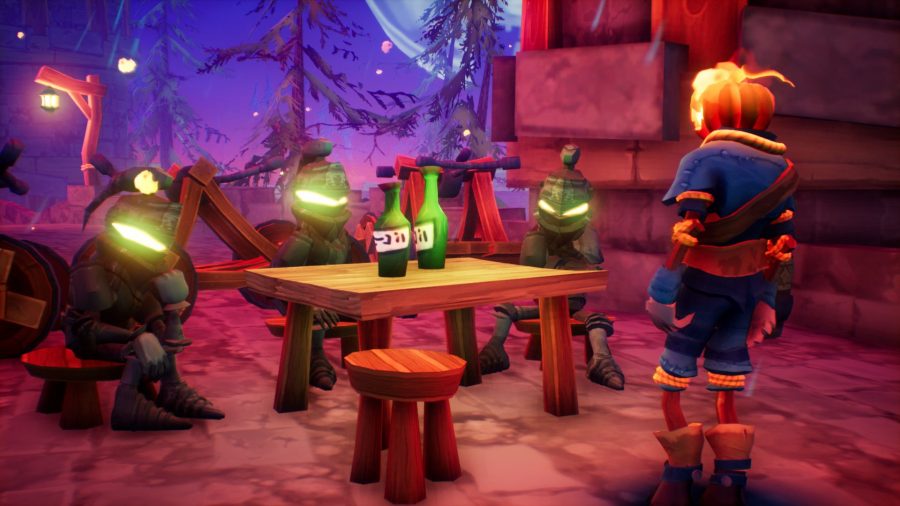Prima facie, Tim Burton’s success doesn’t make much sense. Pitching nightmare fuel to family audiences, including kids, really doesn’t seem like it should work. And yet, as the Nightmare Before Christmas, Edward Scissorhands, FrankenWeenie and many more demonstrate, macabre imagery doesn’t have to run any deeper than the surface.
Pumpkin Jack is an upcoming 3D platformer that understands this very well. It may be set in a nightmare world, but it won’t give you nightmares – the game drips with vivid pastel colours, and objects are chunky in the same way as in a Blizzard game or a Disney theme park. Right angles and parallel lines have been dropped like a lame ’90s trend. Helpful companions, such as a haughty hooty owl and a snarky crow, will also keep you company and trade witty barbs.
Unlike Jack Skellington, though, the mythical Pumpkin Lord Jack is, in fact, evil, and is on a mission to annihilate the forces of Good. Morality is all a matter of perspective, we suppose. We spoke to Nicolas Meyssonnier, the game’s 22-year-old creator, about how he achieved its unique art style, the challenges he faced during development, and why he chose to create Pumpkin Jack in Unreal Engine 4.
“In the beginning, Unreal looked quite hard to get into, but after a while I discovered that it was actually quite easy and I ended up quickly getting very good results,” Meyssonnier tells us. “When I was looking for the right tool to make the ‘Scarecrow Game Project’, as it was called back then, I first thought of Unity, which sounded like a good choice for beginners. But for me, achieving good graphics with Unity was harder than expected. As I am someone who values graphics, art, and atmosphere, it just wasn’t the right tool for me”.
By contrast, Meyssonnier found that the Unreal Engine’s Blueprint tool was hugely helpful in the development of Pumpkin Jack. “The Blueprints Visual Scripting system in Unreal Engine is a complete gameplay scripting system based on the concept of using a node-based interface to create gameplay elements within the Unreal Editor,” the dev explains. “I was able to make a whole single-player game without having to type any line of code!”
“Today, Pumpkin Jack is actually still a full blueprints game, and I have to admit that I am very proud of this! I know some people might think it’s not real programming – which is wrong – but in the end, it’s what gave me the opportunity to complete my own full-size game at the age of 22.” The Blueprints feature has proved to be one of the most popular and helpful aspects of UE4, with many developers in this series eager to heap praise upon it.
As you can probably tell from the trailer and screenshots, Pumpkin Jack is inspired by the kind of colourful action/puzzle platformer that was the big selling point of the 3D graphics revolution. Such games launched the Nintendo 64 and original PlayStation, but probably reached their peak on the following console generation. In Meyssonnier’s words, Pumpkin Jack is “like a compilation of all the PS2 platformers from the 2000s, but with more modern graphics, gameplay, and a unique universe. In this way, Pumpkin Jack combines current technologies and 20 years of gameplay experience into a modern 3D platformer.”

Pumpkin Jack cribs from hack-and-slash games for its core combat, which is based on combo attacks, dodging, timing, and unlocking a range of different weapons. But, in the tradition of those classic 3D platformers, you’ll find a huge range of different gameplay experiences built upon this foundation.
As Meyssonnier explains, “Pumpkin Jack is a game full of smaller games. Every few minutes of gameplay, you’ll find something to distract you: puzzles, intense action sequences, collectibles, or a boss fight. Adding to the main platforming gameplay, there are at least six different variations of gameplay in each level including: escaping a burning barn, a Minecraft-esque phase, and even a flying horse race”. As you might have guessed, working on all these gameplay aspects can be extremely time-consuming, especially for a solo developer.
“Each of those gameplay aspects needs a lot of time and creativity to get the perfect balance between being fun and difficult. I think each one took me about a week to create, and two weeks to polish. Unreal Engine has come very handy in this respect. Thanks to the powerful debug tools the engine offers, I could read and write my code (with Blueprints) much faster. I could literally visualise how my code works while playing at the same time”.
Unreal also helped not just with gameplay design, but with art as well. “It never came to my mind to make a realistic game,” Meyssonnier says. “I work alone and I know how hard it is, and how long it takes, to make a realistic game. So, I adopted the cartoon art style, which asks less technical work and allows for more creativity”.
So the choice of art style was driven more by technical convenience than deliberate artistic sensibility, but as a solo developer the advantages shouldn’t be underestimated. “Instead of working for hours and hours on a single model, it took me only a portion of that time to make and texture the objects in the game,” Meyssonnier says.
“To be honest, the process of creating this art style is quite simple. I tried my best to keep things as simple as possible in order to avoid an overload of work over a long period of time.”
The developer explained the process he goes through to create an asset for the game: “First, I imagine a concept for my needs. Let’s say: a barn model. Then, I open Blender and start shaping it with simple cubes and cylinders. When I’m happy with the results, I give it some ‘stylised’ vibes to make it unique in its style. I tend to modify the shapes a little bit, often bending them to make them look cartoony and gross. After that, I choose the most appropriate texture and integrate the mesh in Unreal Engine”.
Read more: Check out the best platform games on PC
Again, the choice of art style means that Meyssonnier doesn’t need to worry about complex textures, shaders, or lighting at this stage of the process. The assets are simple to create and the materials are all “very flat and shade-less”. Not only does this save on some development time, but it’s also what gives the game it’s otherworldly look and feel. If you want to see the process in full, Meyssonnier has provided a time-lapse video showing his creation of the barn.

When we first got a look at Pumpkin Jack, it was astonishing to learn that such a multifaceted game – a sprawling, PS2-era 3D platformer, updated for the modern world – could be made by a single developer. To build, test, and polish so many different gameplay cores would usually be an immense amount of work. But after speaking to Meyssonnier, it’s clear that he has a strong vision, a lot of determination, and has gained a real mastery of Unreal Engine and its many time- and effort-saving tools.
Related: Check out the best games like Mario for PC
It reinforces the sense that we’ve got throughout this series, having interviewed other solo devs and small teams, that Unreal Engine 4 is lifting both the floor and the ceiling of what’s possible in game development, enabling studios of all sizes and budgets to build projects of ever greater ambition.
Pumpkin Jack is due to release later this year and you can check out the Steam page here. Unreal Engine 4 is now free. Unreal Engine 5 is due to release next year.
In this sponsored series, we’re looking at how game developers are taking advantage of Unreal Engine 4 to create a new generation of PC games. With thanks to Epic Games and Nicolas Meyssonnier.




